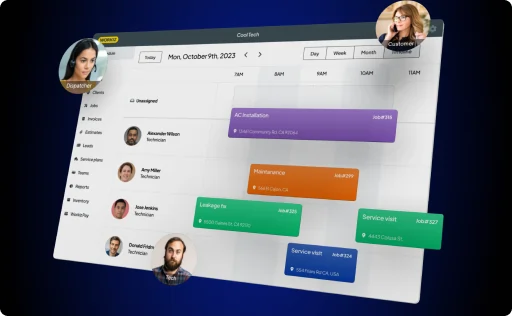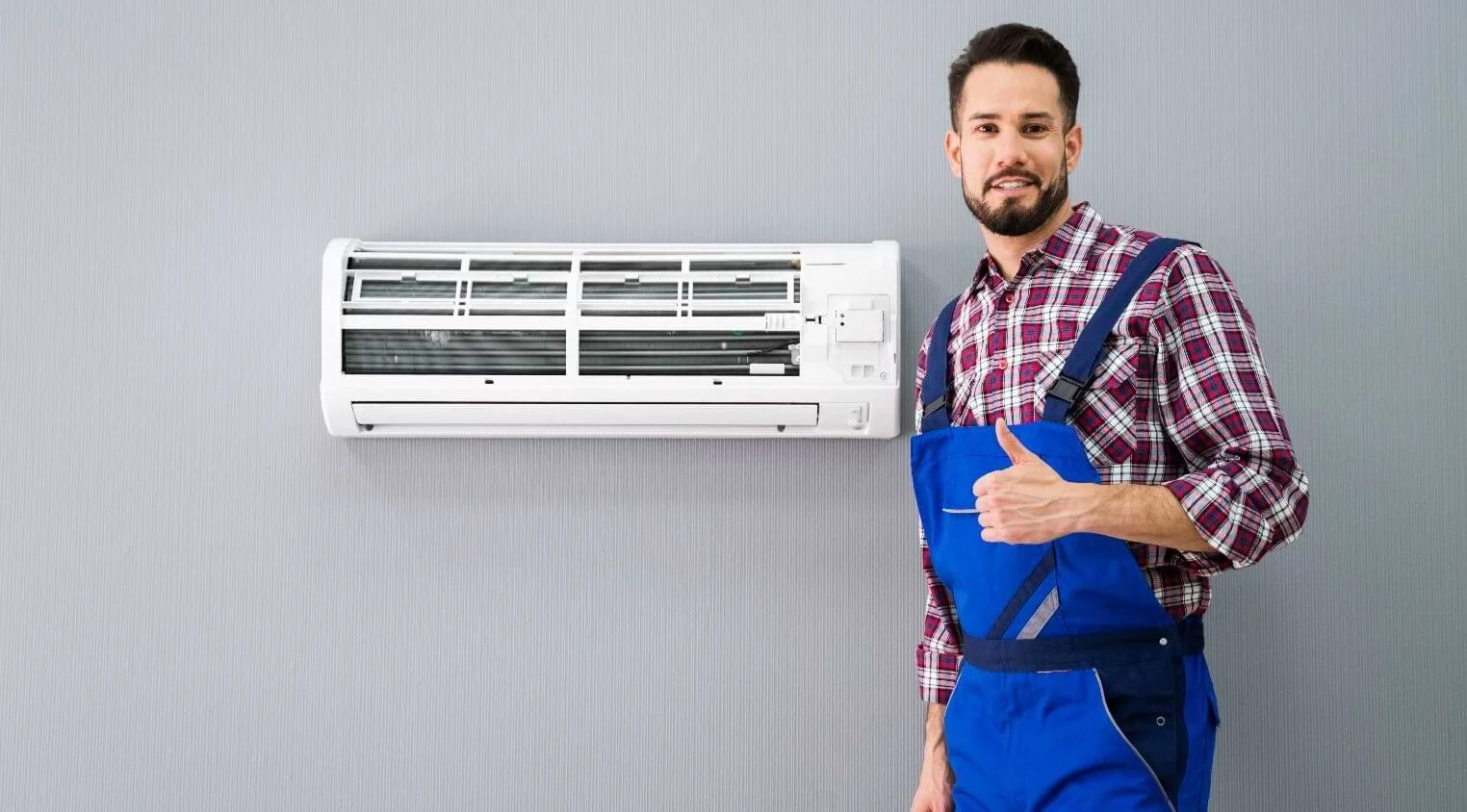It is also the result of increasing awareness and concerns regarding climate change, energy efficiency, sustainability, and comfort. Between 2014 and 2019, the number of HVAC businesses grew by 2.6%. This branch grew its employment by 4.5% and increased its profits by 3.1% to a staggering $94 billion valuation in the US alone. It is also estimated that recent changes in energy efficiency standards will further increase demand for HVAC system installations and servicing. As such, the HVAC industry will require tens of thousands of new technicians in the coming years.
Are you good with your hands? Ready to learn a new trade? Would you like to help people feel comfortable in their homes without breaking the bank or wasting energy? A career in the HVAC industry may be for you!
The time to take the plunge is now. Here’s what you need to know to get started on opening your own HVAC business in 2022.
What you need to know before you start your HVAC business
Before starting any business, you must do your due diligence and learn everything you need to succeed in your new venture. This includes market landscape, target audience/s, the need, main pain points, existing products and solutions, competitor services, price points, and more.
To get started, you can check out some of these helpful resources: city-data.com, the Bureau of Labor and Statistics (BLS), and the US Chamber of Commerce’s website. You can also Google local HVAC businesses to understand the lay of the land in your area.
- What do they offer?
- What kind of customers are they targeting?
- What keywords do they use?
You will want to emulate those HVAC businesses that rank highest in the search results while adding your own competitive edge.
Another point to consider is your budget. Some considerations include:
- How much money will you need to launch and run your HVAC business successfully?
- Do you have this money on hand, or will you need to seek external funding?
You must have enough money to stay afloat during the first few months when most of your efforts will be geared toward raising awareness of your new business. Unless you’re a whiz at marketing (or partner with marketing and finance geniuses to help you get started), it may take three to four years to turn a significant profit. Your fledgling years will likely involve some trial and error, but if you stack your cards right, they will be worth it in the long run.
Pros & cons of having your own HVAC business
Starting your own HVAC business comes with several advantages. For starters:
- You’d be your own boss. You’d get to call the shots while working in various settings – residential, commercial, and industrial – or specializing in a niche setting or industry of your choosing.
- There is no end to the demand for HVAC installation and service, and construction projects abound. As such, your profit prospects will be on the rise from the moment you set up the office.
- You’d get to be a problem solver and use your hands to provide specific skills. There is a good feeling knowing that you’re the one who can install an air conditioning unit during a heatwave or provide warmth to a workplace in times of snow.
That said, running your own HVAC business is not without its challenges:
- First off, there’s a learning curve involved. You must ensure you have adequate and up-to-date knowledge and training in everything related to heating, ventilation, and air conditioning products and services.
- You must also stay on top of the industry’s technological advancements to ensure your customers get the best products and services.
- You must always stay ahead of the competition.
- Often, experience is needed to gain experience, which means it can be challenging to build a reputation as an HVAC expert before even starting your business. You may need to think outside the box and find novel ways to get your foot in the door.
- Finally, the HVAC industry has its fair share of physical demands and largely depends on customer needs. You will likely find yourself having to be on call, at least at first, while you build your customer base and reputation.
8 steps to starting an HVAC business
Step 1: Create a business plan.

Leveraging your market research into a comprehensive yet concise business plan is a smart, future-forward first move. Not only will it help you convince investors to jump on board, but it will also ideally position you to market your business and land new customers. That way, so you can satisfactorily fulfill their needs. Your business plan should include the following:
- An executive summary;
- A description of your HVAC business’ mission, vision, specialties, and offers;
- The legal structure under which your HVAC business will operate;
- The service area(s) you plan to cover;
- The products and services you intend to provide;
- Management and employment details;
- A financial plan that includes estimated costs, debts, profits, and liabilities. It should also include an analysis of your projected cash flow and break-even point;
- SWOT analysis;
- Competitor and target market analyses
Your business plan will accompany you to every meeting with banks and potential investors, so make sure it is thorough and precise.
Step 2: Make it official.

Before you can start working, you must file the proper paperwork. While small business requirements vary from state to state, specific requirements must be met in every locality.
First, determine what sort of business entity you would like to form: sole proprietorship, partnership, corporation, or Limited Liability Company (LLC). Each entity type has its own advantages and disadvantages. Be sure to research which one suits your HVAC business needs before completing any legal paperwork.
You’ll also need to come up with an available name for your business. Choose a name that attracts the customer’s eye and instantly ensures they know what your business is all about. Then, register your business using your new name, business address, and contact information. Once the paperwork is complete, you’ll receive your:
- Business license and registration – proof that you’re running a legitimate business
- Trade license – mandatory before performing any work in most states
- Business insurance and bonds – to protect yourself in the case of accidents or damage. Note that you’ll likely need to take out several types of insurance. Such insurances include general liability insurance, commercial property insurance, commercial auto insurance, and workers’ compensation insurance. Not all insurance types will necessarily be required from the moment you launch your HVAC business. Still, you should plan to invest in them as you grow and scale your business.
Next, send your business information to the IRS and request an employer identification number (EIN) so that your tax processes can be smooth and straight, and narrow.
It’s recommended to consult with a business advisor to ensure you file all the relevant and necessary paperwork right and on time. Doing so will help you avoid any misunderstandings and fines down the line.
Step 3: Get your finances in order.

When setting up your HVAC business, you’ll need to open a dedicated bank account that is separate from your personal bank account. Doing so injects immediate transparency into your HVAC business’ financial operations. It fosters a sense of trust in you as the business owner among financial entities and prospective customers alike.
You may be in the market for a small business loan to cover startup costs. Other potential sources of financing include:
- Business credit cards;
- Lines of credit from local banks;
- Investments in your business from private investors or VC companies.
It’s recommended that you consult with a financial advisor on which financing option is in your new business’ best interests.
Next, you’ll need to set yourself up to attain positive profit margins. Set competitive yet sustainable rates that take into account your training and experience. You’ll also need to allocate a sum to be set aside as a salary. Calculate when customer payments would be received and when outgoing expenses, such as rent, vehicle payments/maintenance, equipment, inventory, and other deductibles, must be made.
Step 4: Market your business.
Any business looking to succeed in the ultra-competitive service industry must allocate resources – time, money, and human – into a precisely targeted marketing strategy and campaign. That is where you share your business’s unique value proposition with the world!
It can cost five times more to attract new customers than to retain existing ones, so your marketing should encompass both lead generation and nurturing efforts. Reel in new customers by educating them on what products and services you have to offer. Let them know how these products and services can resolve existing problems related to keeping their spaces well-ventilated and comfortable.
Then, keep those customers coming back by engaging them with fun and fresh content. Remind them that you’re available for routine maintenance, upgrades, and other servicing, as their preferred partner in everything HVAC.
In the HVAC industry, word-of-mouth referrals are king. You can also get a leg up by posting on social media and creating an SEO-optimized website that’s easy to find and navigate. You don’t need to start with a vast marketing budget; plenty of headway can be made organically.
Step 5: Launch your HVAC business.

Once you have all dotted all your legal “i’s” and crossed all your financing “t’s,” it’s time to take your business to the “streets.” It’s a good idea to start small, specialize your services, and serve each customer with dedication and to their satisfaction before you scale. Afterward, add on employees, expand to nearby localities, increase your offering, etc. Remember, your new HVAC business may not be profitable at first. That’s why the more positive experiences your customers have, the more service calls you will receive. That is the attitude you need to ensure more money remains, after expenses, at the end of the month.
Step 6: Pursue continuous training, refresher courses.

Even though you completed an HVAC certificate program before launching your career, your training is far from done. When it comes to furthering your field-specific training, you cannot rest easy. New products, solutions, services, and technologies are constantly being introduced to the field. You must keep up with every new development to serve your customers best. You can also add unique specialties to your roster by getting certified in the following areas (if you’re not already certified in them):
- Air Conditioning (AC)
- Air Distribution (AD)
- Light Commercial Refrigeration (LC)
- Commercial Refrigeration (RC)
- Gas Heating (GS)
- Oil Heating (OL)
- Heat Pumps (Air-to-Air) (HP)
- Hydronics Gas (HG)
- Hydronics Oil (HO)
- HVAC Efficiency Analyst (EA)
Doing so will help you provide new and existing customers with even more solutions to their HVAC problems, ensuring that they call you when they’re in need.
Step 7: Manage ongoing operations.

Now that you’ve launched your HVAC business, it’s essential that you stick to the business plan you outlined earlier on. Create a system of checks and balances to make sure you aren’t overextending yourself or your resources. Make sure to oversee and manage your cash flow, as well as understand which of your products and services add value and which don’t. This way, you can focus on revenue-generating activities only and ensure your lean HVAC business’ accounts are always in the black.
It’s also recommended that you leverage some of the latest HVAC business management tools the market has to offer. A CRM (Client Relationship Manager) software, for instance, can help you keep track of your client information, services calls, etc.
Note that managing ongoing operations requires a certain degree of flexibility. You’ll need to know when your original business plan areas don’t meet your or your customers’ needs and adapt accordingly. This may mean a little extra work in the short term. Still, it’s vital in promoting positive customer experiences and better ROI for the long run.
Step 8 – Plan for the future.

While you might not be ready to scale your business right away, it’s always good to take some time to plan for the future. You can set milestones or benchmarks that, upon achieved, will indicate that it’s time to level up your HVAC business. Determine when it’s time to hire new employees and add new products or services to your offering. You can also establish indicators of when you should expand your reach to additional localities or encourage investing in other relevant technologies or vehicles.
Final thoughts
Regardless of whether you’re looking to launch a career or become a business owner, you can get started on your path to running a successful HVAC business today. Your new business may present you with new challenges. However, launching your own HVAC business also presents opportunities for you to help customers on a hands-on basis. The key to making your HVAC business successful is making the most of what you have – your knowledge, experience, and expertise – and adopting a customer-centric approach.
Good luck!










